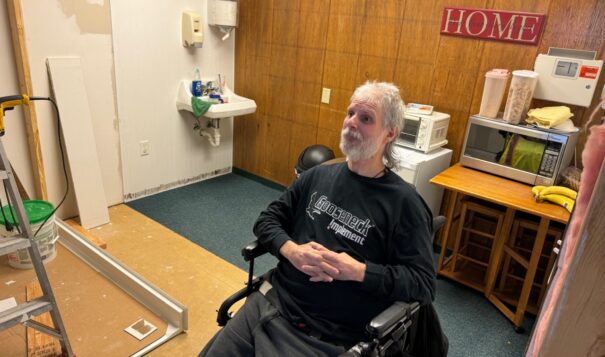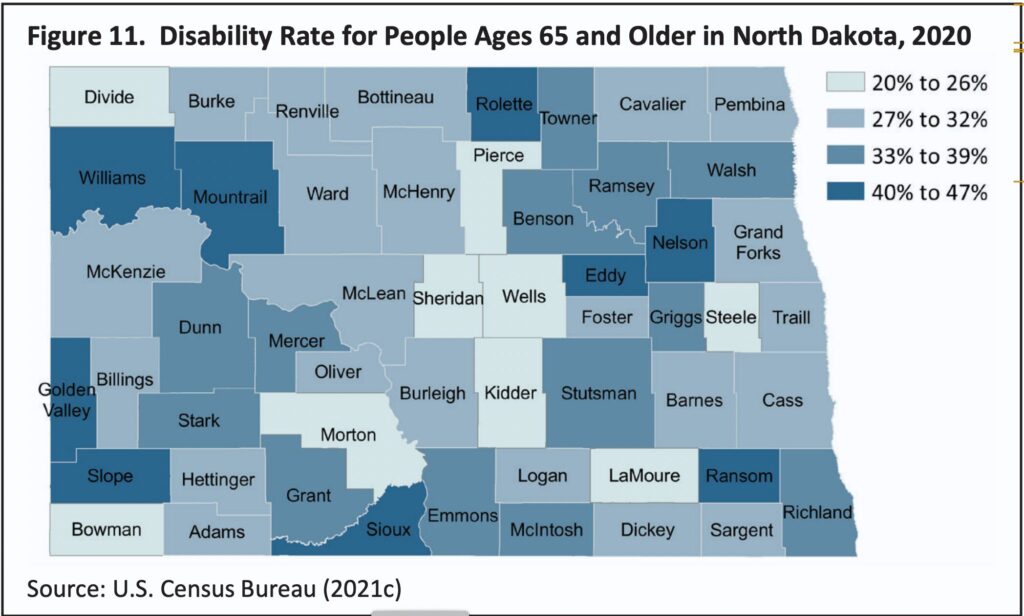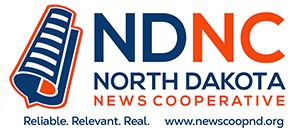News Based on facts, either observed and verified directly by the reporter, or reported and verified from knowledgeable sources.
For people with disabilities, affordable accessible housing a major challenge
 Joe Yasenchack is in the process of renovating a former clinic into a residence
livable for himself. To stay, he needs a disabled-accessible shower. This, and other necessary
rehab costs are likely to tally close to $35,000. His sister has started a GoFundMe campaign to
raise funds as other possibilities have been difficult to tap into.
Joe Yasenchack is in the process of renovating a former clinic into a residence
livable for himself. To stay, he needs a disabled-accessible shower. This, and other necessary
rehab costs are likely to tally close to $35,000. His sister has started a GoFundMe campaign to
raise funds as other possibilities have been difficult to tap into.
Bureaucracy, limited availability, contractor shortages add complexity
Joe Yasenchack lucked out when he was forced to move from his closing Harvey Manor housing complex in late July 2023.
A vacant clinic smack in the center of Harvey was available and reasonably priced for someone who is disabled and on a fixed income. It was close to his church, to restaurants, the bingo games he attends at the senior center, two-blocks from his in-laws, and catty-corner from this case worker’s office. After several months renting, he secured a loan to purchase the 1,200 square foot building.
“I like the privacy,” Yasenchack said. “Everything’s convenient for me.”
To stay there, however, much more needs to be done. In particular, he needs a handicap-accessible shower, a kitchen, electric door openers, grab bars and other infrastructure to move about the building safely and independently.
But renovating is expensive, both for materials and labor. Volunteers in the community have helped with some remodeling, but paid contractors are needed for plumbing, electric work and other major installs.
His sister Veronica Horoschak in Ohio has started a GoFundMe campaign and hopes to raise around $35,000 to cover the rest of the costs. The handicap accessible shower is the main hurdle now, and something he is required to have to stay in the building.
“I’m very proud of Joe for not being afraid to take the risk he did, and for advocating for himself and others with disabilities,” Horoschak said.
One pilot program in North Dakota is helping a few people in similar situations, but professionals working with people in need of this type of help agree much more needs to be done statewide.
Complex realities
Yasenchack, now 58, suffered a brain aneurysm in his early 30s and after 18 years in nursing home care, started living independently in 2019. He would eventually like an elevator to access the basement where most of his possessions and food are stored. It is currently only accessible to him when his nurse or other visitors stop by to lend him a hand.
While funding is available through agencies like the U.S. Department of Housing and Urban Development, the USDA, the North Dakota Housing Finance Agency, and other programs for low-interest loans, tax credits, rental assistance and rehab projects, finding out how an individual might qualify is a challenge.
For example, Yasenchack can’t apply for a USDA loan that could help with the overhaul because his home is still zoned commercial and not residential.
The complexity Yasenchack faces is the reality for most people with disabilities across the state. Finding available housing in the first place is difficult. Arranging all the funds and contractors to turn it into an accessible residence complicates the process.
Horoschak hopes her brother’s story can help ignite discussion in cities and towns across North Dakota about how to turn long-vacant commercial properties into accessible residential housing.
Marcia Schneider, Yasenchack’s case worker from Options Resource Center for Independent Living, has a personal understanding of her client’s plight because she became an amputee three years ago.
“I understand the situation more, because I’m living it,” Schneider said.
There are common sense solutions that could work for communities across the state to address affordable accessible housing needs, she said, but bureaucracy and red tape complicates the process.
“There’s so many ways you could make it so much more cost efficient, if you really wanted to,” Schneider said.
Increasing needs
According to a statewide housing needs assessment conducted by NDSU’s Center for Social Research in 2022, around 32% of people aged 65 and older have a disability, and over 82,000 people in the state had a disability as of 2020.
A total of nine counties across the state have disability rates of between 40 to 47% among those 65 and older, according to the assessment.

Disabilities range from difficulties walking or climbing stairs, to hearing, cognition, vision impairment and other challenges that make living independently problematic.
Josh Askvig, state director for AARP, said most people want to be safe and independent as they age, but a variety of factors makes that difficult.
This includes accessing loans or funding based on income guidelines, then finding contractors to do the work that are also qualified service providers under state rules. When most are already busy with normal customers this makes the “thin list become even thinner,” he said.
“There are still large pockets of the state that are aging and aging quickly, so that’s a struggle,” Askvig said. “And that’s especially a struggle in rural communities, where folks may not be able to stay safe and independent in their home.”
Renters and homeowners with disabilities were also more likely to report they were behind on payments of rent or mortgage, something that can disqualify them or reduce their chances of accessing loans or other funding.
Cheryl Merck, of the North Dakota Center for Persons with Disabilities, said the 14 staff at the center each has current caseloads of 60 to 70 people looking for housing. Many have barriers to housing ranging from late payments to red flags that arise in background checks.
“Some people we work with are coming out of rehabilitation centers, sober living, and things like that,” she said. “Landlords aren’t willing to rent to them and we really struggle to find private landlords or some type of connection where a landlord is willing to take a risk.”
Besides those cases, Merck said a general lack of affordable accessible housing units across the state means that people end up staying in nursing homes for months longer than necessary.
“The problem is that a majority of the people that we work with are on fixed incomes, and so they can’t afford to do the repairs or the renovations to their homes,” to make them accessible, Merck said.
Looking for solutions
Accessibility is even more of a challenge in rural areas where there are limits on the numbers of people that know how to access funding streams, plus limits on the numbers of move-in-ready homes or that could be made accessible, as well as the contractors to do the work.
“The majority of older adults in North Dakota, and other states are no different, want to be in their own home and own community, if possible,” said Jane Strommen, a gerontology specialist at NDSU.
The barriers they face aren’t only in creating accessible homes, she said, but also within many rural communities themselves. This can include a lack of transportation, lack of nearby health care services, and lack of basic services like groceries or places to eat.
Add to that a reduced availability of a workforce needed for repairs and maintenance, let alone full-on rehab projects, and many projects go undone for extended periods. This can mean many elderly and people with disabilities end up staying in a home that’s fallen into disrepair that they can’t sell.
“They’re kind of a forgotten group of people in North Dakota that are aging in place, not by choice,” Strommen said.
For others, planning never took place to make older homes or rental units accessible.
“People are just trying to get by and make that work, and so it really doesn’t promote their health and it makes it harder for them to fully utilize the space that they have,” Strommen said.
For more than a year, Mike Chaussee, executive director of North Dakota Assistive, a nonprofit working to get assistive technology to those who need it, has worked on a pilot project called CAPABLE that aims to keep people in their own homes in the most efficient, cost-effective ways.
That includes creating a team for each project which includes an occupational therapist, a registered nurse, and a contractor that come to a person’s home to assess their individual needs ranging from dietary and medication, down to the infrastructure requirements for them to stay safely in their home.
The pilot project is currently state-funded and would need continued funding to go forward and reach a wider number of people, he said. Currently costs per project are averaging about $3,000, Chaussee said, with 10 projects initiated the first year and another 10 now running in the second.
He said a big eye-opener for him has been the role of the occupational therapist in bringing together the health aspects with the infrastructure aspects.
“They really have an eye for the person, rather than just the building or the facility, the grab bars and the tubs,” Chaussee said, since they work with the client to find out exactly where those technologies need to be placed. “They try to really search out the best solution for them as human beings.”
It is these kinds of replicable, cost-effective and accessible programs that might be the way forward in addressing affordable solutions to housing for the disabled across a range of incomes and needs.
In his state-of-the-state address in January, Gov. Doug Burgum focused much of his attention on an initiative for developing a comprehensive housing strategy and the launching of a new office of Community Development and Rural Prosperity.
Spokespersons for Burgum and for these new initiatives said they are still in the early stages of formulating policy and are not yet ready to be unveiled, but will include listening sessions around the state focusing on housing availability, affordability and stability.
Strommen said she hopes those sessions are “really intentional about hearing from older adult populations in those communities,” instead of just professionals, and also potentially address the wider basic service needs in communities.
“If we help make a place a better place for older adults as they age, it really becomes a better place for everyone,” Stommen said.

The North Dakota News Cooperative is a non-profit news organization providing reliable and independent reporting on issues and events that impact the lives of North Dakotans. The organization increases the public’s access to quality journalism and advances news literacy across the state. For more information about NDNC or to make a charitable contribution, please visit newscoopnd.org.
